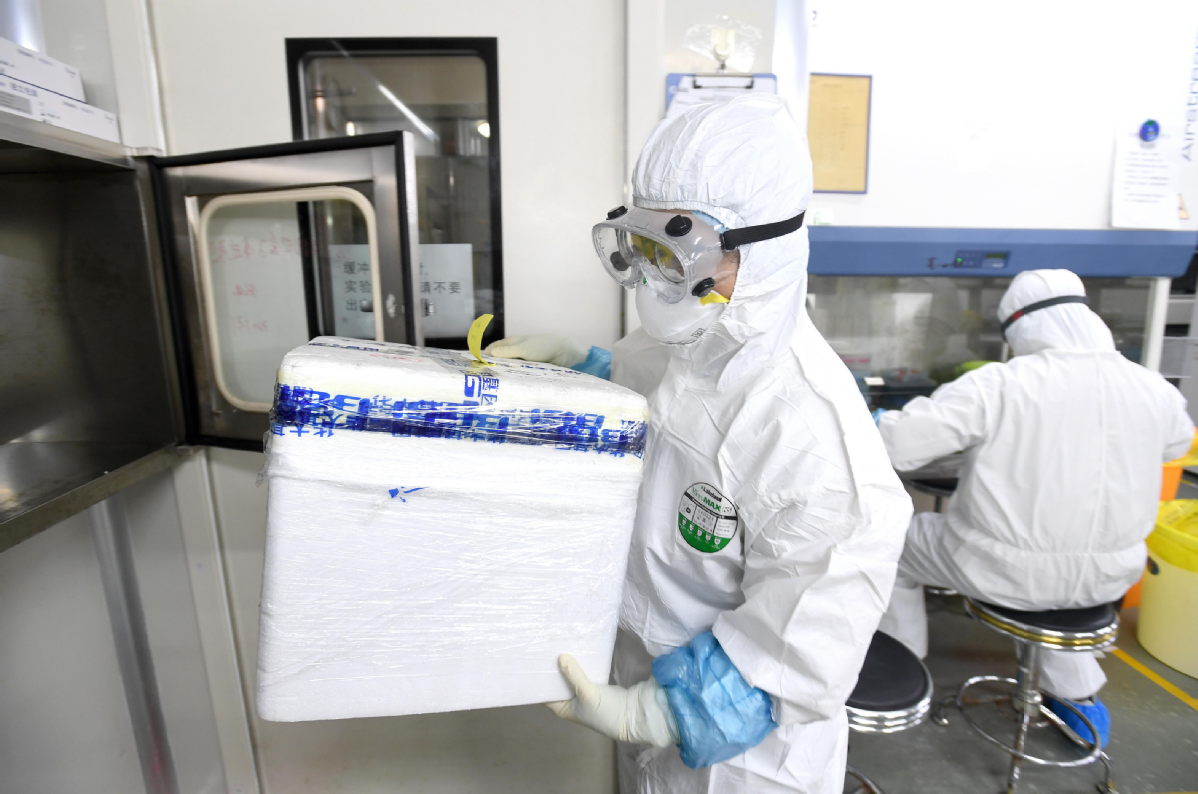Global testing kit shortages open new growth doors for Chinese companies






Gene sequencing companies from China are stepping up nucleic acid kit exports as demand for quick, effective solutions to detect the novel coronavirus increases across the globe, experts said on Wednesday.
The confidence of the companies has been further boosted after several countries indicated that they would procure sufficient quantities of the high-quality test kits from China.
Data from caclp.cn, an industry monitoring platform under the National Association of Health Industry and Enterprise Management, showed that by March 28, detection equipment made by more than 110 Chinese in vitro diagnostic (IVD) enterprises have got the CE-IVD Marking and Free Sale Certificates. The certifications are necessary for IVD devices sold in Europe.
In the North American market, detection kits from BGI Genomics and Lupu Medical have received the Emergency Use Authorization issued by the United States Food and Drug Administration, indicating that their products can now be sold in the US clinical market.
With COVID-19 rapidly evolving into a pandemic, there is an acute shortage of detection equipment across the world, with the average daily demand hitting 500,000 to 700,000 kits, according to data from Huaxi Securities.
Wang Peijun, chairman of the committee for the radiology branch of the Shanghai Medical Association, said that although computerized tomography imaging offers valuable guidance on COVID-19 detection, nucleic acid detection is still the gold standard for case confirmations, as CT image shadows are present in other lung diseases.
Shenzhen, Guangdong province-based BGI, which also has the CE-IVD Marking, said following a spate of enquiries, it is now gearing up for exporting the detection kits. The company said international orders for BGI detection kits had surpassed 1 million by the end of March, covering 70 countries and regions. It has already made deliveries to Japan, Brunei, Thailand, Egypt, Peru, and the United Arab Emirates.
Chen Lili, a salesman with an East China-based detection kit manufacturer that he declined to identify, said overseas orders have been steadily increasing. The company has already removed regional restrictions for sales so that all its employees can handle overseas orders.
Shi Xiaochen, an ultrasound physician at Peking University People's Hospital, said the global shortage of detection kits was due to the epidemic outbreak, as the growth in patients was way in excess of the emergency treatment capabilities of local hospitals.
Yin Ye, CEO of BGI Genomics, said: "China's growing capabilities in medical devices, especially IVD research and manufacturing in the last 10 years, have created a strong platform to deal with the boom in sudden demand."
Zhang Yan, an expert with Willingmed, a Beijing-based medical technology developer, said: "The fight against the epidemic has spurred the 'go-global' process of Chinese IVD manufacturers. Domestic firms have already made considerable progress in the research and development of detection kits since the epidemic appeared in China. Overseas companies are learning from these experiences and more willing to import our products."
Starting Wednesday, exporters of medical products, including COVID-19 testing kits, medical face masks and ventilators, need to provide extra documentation when they go through Customs clearance, according to the commerce ministry.
China's epidemic experiences have proved that the products are qualified and trustworthy, Zhang said.
IVDs have become an important subcategory of the medical equipment sector and have huge growth potential. Markets-and-Markets, an industry research consultancy, expects the global IVD market to attain a value of $75.1 billion this year. Multinational corporations, including Abbott, Roche, Siemens, Danaher, and Thermo Fisher, account for over 50 percent of the market share.
However, domestic IVD firms are also catching up. According to the report from Beijing-based research firm China Stone, in 2018, China's IVD sector grew at a rate of 18.43 percent year-on-year, way higher than the global rate, which was less than 5 percent.
With the country's enhanced medical insurance system and advanced technologies, the sector is expected to witness compound annual growth rates of over 15 percent in the next five to 10 years, the report said.
































